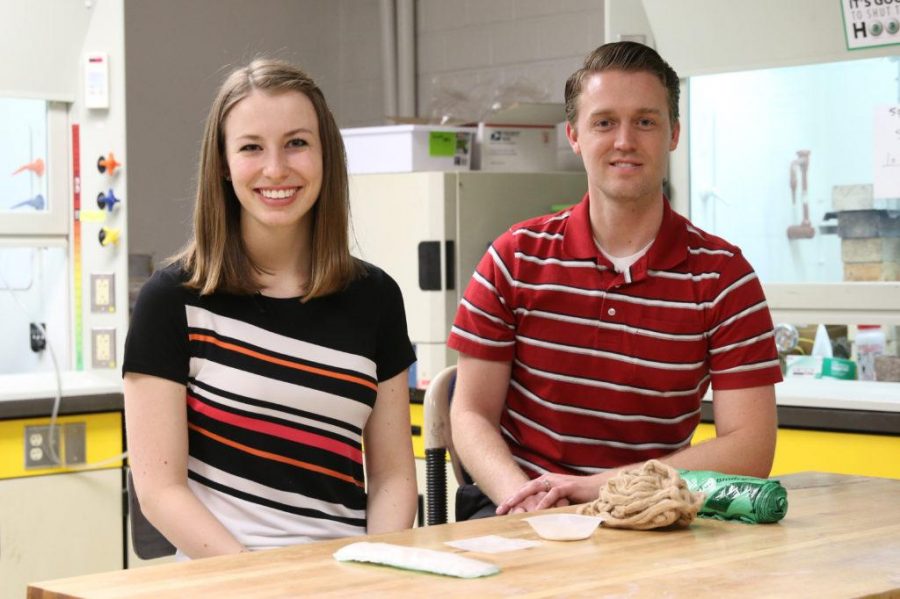Feminine hygiene products are used by millions of women around the world, and they often end up in landfills. Tampons, pads and applicators do not degrade quickly or easily, and these materials build up into huge piles of waste that last for years.
After two and a half years of research, a team of students in the material science and engineering department at the University of Utah have developed a 100 percent biodegradable feminine maxi pad to solve the issue of feminine hygiene product-waste. Their work started when SHEVA, a nonprofit in Guatemala focused on empowering women and girls, reached out to Jeff Bates, a professor at the U. In Guatemala, the lack of sanitation and sustainable solutions for waste is dangerous. SHEVA requested the development of a super-absorbent material that could be used in maxi pads. This inspired Bates to create a pad out of natural, renewable materials with students Amber Barron, Alicia Dibble and Ashlea Patterson.
In September 2016, the team participated in the Get Seeded competition, earning $3,000 to make their idea happen. This grant helped the project take off, and they ultimately formed a startup dubbed SHERO — Sustainable Hygiene Engineering Research and Operations.
Many sustainable and natural pads exist across the world today. However, they don’t meet the needs of women in Guatemala.
“A lot of the renewable pads now are washable, which is great,” Barron said. “If you don’t have potable water, though, then those pads don’t solve the problem. In India, they use banana chunk fiber in renewable pads, which is very stiff and uncomfortable.”
Instead, they decided to explore natural materials already in Guatemala, like cotton and flax, in order to make a better pad.
The SHERO pad’s prototype has four separate layers. The first is a cotton material which functions like a tea bag, drawing the liquid into the pad. The second layer is called “the fluff,” also made of a cotton-based material. Cotton is generally hydrophobic due to its layer of wax, but the researchers discovered that boiling the material allows it to become absorbent. The third layer is algae based and gels in the presence of fluid. The fourth is a corn based material that can absorb anywhere from 20 percent to 50 percent of its weight, and it gives the pad a more comfortable feel.
However, some students, including Kathryn Glaittli, a bioengineering major at the U, are worried that not everyone can afford the pad.
“I’m curious about the pricing,” Glaittli said. “That decides whether or not a product like this could take off and really help those communities.”
Bates and the team plan to price each pad at about 17 cents each, meaning that not only will the quality, feel and price be similar to name brand pads in the United States, but it will also be better for the environment and consumers. The SHERO pad will be available in both the U.S. and Guatemala in the upcoming year.



